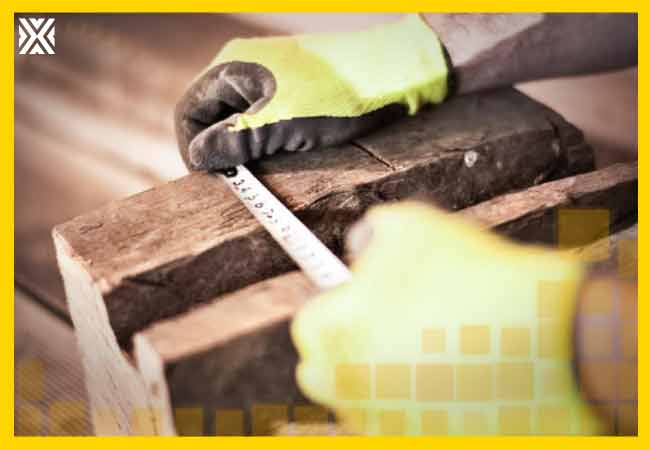Currency
November 16, 2019

The EN388 Standard Explained
The development of standards to compare the performance of PPE products has significantly improved the ability of safety managers to select appropriate PPE.
From chemical resistance to fire and flame resistance, the standards have helped us determine the appropriate product for a given application. However, the standards cannot be solely relied on when making a decision. An adequate assessment must be made of how the standard should apply to the specific use. In other words, we need to use common sense. Nowhere is this more relevant than in the blade cut and the puncture tests associated with EN388.
Let’s briefly review the European EN 388 standard which is designed to assess the performance of a fabric or layers of fabric for their ability to resist heavy rubbing, cutting by a blade or sharp object, tearing, and puncture by a pointed object. The test procedure includes a separate test for each of these properties, and a performance level is awarded according to each test result, for example a material with an abrasion resistance of between 100 and 500 cycles would be awarded level 1. Read more about the update proposed to EN 388:
The minimum test results required to achieve the various performance levels are listed in the table. When a protective glove has been approved for CE marking to the EN388 standard, these test levels are quoted as four numbers below the EN388 pictogram, the numbers are always shown in the order in which the tests are described. Please note the progression between the minimum results required to meet the increasing performance levels. This means, for example, that the increase in test performance required to improve from blade cut index level 4 to index level 5 is eight times that needed to improve from level 1 to level 2. Also, where multiple layers of material are involved, the abrasion and tear resistance levels are derived from the most resistant of the individual layers, not the combination of layers. It is important to note that blade cut resistance is the only test parameter where a performance level 5 is awarded.
Cut tests have always had tremendous variability, and the ratings can give a false sense of comfort to the user, who might think that since it is a level 5, they are protected. Within the blade cut resistance level of 5, there is a wide range of performance. We often hear safety professionals and glove manufactures speak of gloves being a “low 5” or a “high 5”. So, it must mean that there is a need for additional stratification. Then, why don’t we add a level 6 and a level 7 so that will allow us to better stratify and qualify the level of protection? A glove manufacturer can have a product that can withstand just over 2000 grams of cut resistance (most likely qualifying for level 5) and be classified in the same level as a glove that may take well over 5000 grams of cut resistance.
If you require a Level 5 glove in your factory, you may not be getting the “best” protection available, you may in fact just barely be providing your employees with the level of protection they really need. Wouldn’t you want to know the difference? So if you could require a level 6 or level 7, and be more able to ensure that the gloves meet your requirements, and provide the maximum protection, wouldn’t that make more sense?
Real application tests are vital
It should be clear that cut levels are only a place to start looking, and are not the complete analysis for selecting PPE. The standardised tests can give us a directional indication of where to start looking, and then we can confirm that performance with real application tests in our workplace. Furthermore, real-world tests are needed because, for example, the way materials cut on a standard test machine is very different from the way those materials would cut if used in the palm of a glove that is immobilised under load.

Importance of puncture resistance testing
Perhaps an even more important performance area is that of puncture resistance. A safety manager once summed it up, “Why are we considering the results of a test that essentially measures the puncture resistance of a roofing nail [the EN388 probe] when I am trying to protect employees from hypodermic needle threats?” Good question.
The EN388 test for puncture resistance has three critical flaws as it relates to testing new material technology and new hazards. First, the probe is not adequate for testing the range of puncturing hazards that are prevalent in the market today. Second, the speed at which the probe moves is not representative of any application that you might find in the market (100mm per minute? Does anything move that slowly?). Third, it doesn’t allow for the fact that contact with the glove’s protective material can alter the probe and change future results.
So why the disconnect? It is not that the standards were not well developed. A lot of thought was put into the development of a reliable and consistent measurement. The problem lies in the lack of good alternative test probes that are consistently produced and the evolution of new technologies, products and materials that simply don’t test the same way that other materials test. HexArmor® is one such example. This range of new product utilizes a patented technology that consists of composite materials that don’t behave the way typical leathers, nitriles, rubbers, and aramids test.
During the EN388 blade cut resistance test, HexArmor products actually wear out the circular blade before it cuts through! The EN388 puncture test also does not allow for the capabilities of the new materials. HexArmor products were developed to provide puncture resistance to sharps such as needles, glass shards, wood slivers, etc. Many of these real-world puncture hazards don’t behave at all like the standard EN388 test probe, so the puncture resistance associated with the EN388 doesn’t give the user a good idea of how the product will perform against the specific hazard.
Developing a supplemental test
So, what should we do to address these flaws in the testing standards? First, let’s look at the current test probe. The need is to develop a separate test for hypodermic needle resistance instead of using the standard probe. This is a good start, and SATRA, a UK-based testing house and CE notified body, is developing a supplemental test that does just that. This is a step in the right direction. However, the supplemental test is done with a 21 gauge needle only. Is this sufficient to understand the level of protection being offered by a product?
A medical needle looks very different to the tip of the standard probes used in tests such as the EN 388 and the ASTM 1790. Medical needles are optimised for skin penetration. It has a long sharp cutting edge or bevel, which actually cuts the material being tested as it pierces the fabric. Standard probes don’t cut through; they actually stress the material until it forces the fibres apart, or until they break. Clearly, these are very different sets of physics, and as such, they should be tested with a different standardised test.
As we consider a new standard test, we need to allow for the fact that even something as precise as a medical instrument has variability in the shape and cutting edge along the point of the needle. Needles of the same type and gauge have small differences in their dimensions and strengths. Different needles can also have different bevel angles and vary from one bevel to 3 bevels. How do the tests allow for these differences and would they affect the puncture test? Furthermore, these needles are easily blunted as they come in contact with hard objects.
So it should be obvious that in the test labs at HexArmor, we have observed this variability in the performance of the needles. Both have been used as test needles in testing HexArmor products, but notice how one needle has a curved and hooked tip. Clearly there is some variability in the manufacturing of needles that would need to be considered to select a probe with consistent tip strength. Also, if we were to reuse this needle for subsequent puncture test, it would perform substantially different (registering higher force required to puncture) from the one on the right. So, another factor to consider in our development of an improved test is the reuse of the probe. EN388 currently requires the “checking the probe every 500 uses”. This will not work with hypodermic needle. The development of this test needs to allow for replacement of the needle for each individual test run. Also, needle size affects the puncture test results. How a material resists a 25 gauge needle will be remarkably different on how it might resist a 30 guage needle, common for insulin injections.
Despite the standards that exist today we must make our own conclusions about the suitably of the tests used to measure a particular hazard, such as needlestick resistance. A product that scores a puncture level 4 on the EN388 may or may not be good for hypodermic needlestick resistance. A separate test is required to know for certain.
As for assessing other hazards such as puncture hazards from wood, glass, etc we would need yet another test. Does a sliver of wood perform like a needle? It depends. It most cases it does not. However a standard test for everything becomes less practical. This is when real-world application testing becomes necessary, and we have to transition from using the EN388 results as the final answer to using them as an initial guide. As you look to make decisions on PPE selection, consider the EN388 results and any supplemental tests, but then do your own real-world safety test on the job. Make sure that the tests are representative of the hazard you are trying to mitigate.
Ask the following questions to help you make a well-informed decision about your PPE:
The market is changing rapidly. New materials are improving our ability to protect from threats that were previously elusive. There is certainly a need for new standards to help us measure these threats, but most importantly we need to be aware of what the current standard tests are actually measuring. New and better tests will help, but it will always come down to using common sense and performing your own due diligence.









